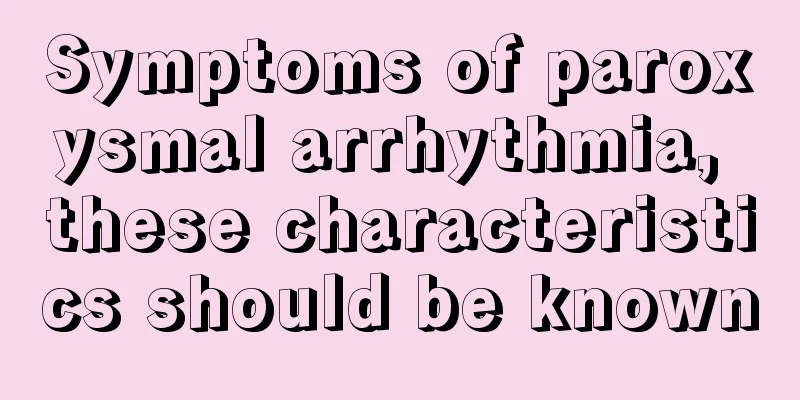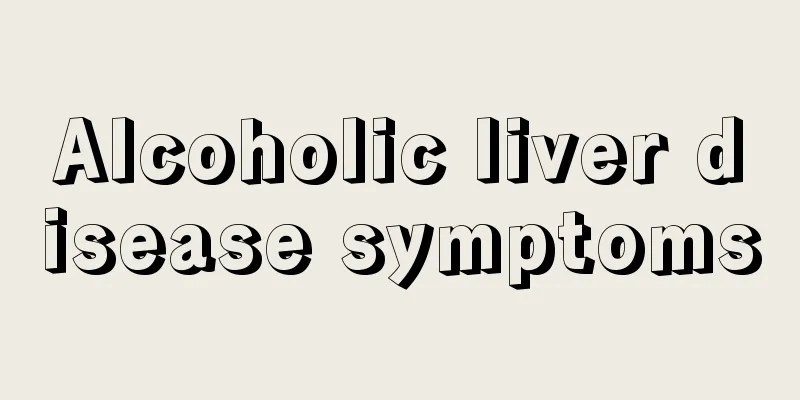Symptoms of paroxysmal arrhythmia, these characteristics should be known

|
A very common type of arrhythmia is paroxysmal arrhythmia. The typical symptoms exhibited by patients are palpitations, dizziness, sweating, and chest tightness. An electrocardiogram should be performed in time to confirm the diagnosis. In normal times, more attention should be paid to the scientific diet for arrhythmia to avoid the onset of the disease. 1. Paroxysmal supraventricular tachyarrhythmia (PSVT) is a common arrhythmia, which includes various types of tachycardia and causes a series of clinical manifestations due to the sudden and rapid acceleration of the patient's heartbeat. Patients with paroxysmal supraventricular arrhythmias often experience palpitations, sweating, dizziness, vertigo, chest tightness, chest pain and difficulty breathing during an attack, and fewer patients may experience syncope. 2. Paroxysmal supraventricular arrhythmias include many types. Patients with irregular heart rhythm mostly suffer from premature contractions, atrial fibrillation, and multifocal atrial tachycardia; while paroxysmal supraventricular tachycardia is characterized by absolutely regular heart rhythm, repeated attacks of arrhythmia, and sudden onset and cessation of arrhythmia. Stimulation of the vagus nerve can terminate reentrant tachycardias involving the sinoatrial node, such as atrioventricular reentrant tachycardia and atrioventricular nodal reentrant tachycardia. 3. The definitive diagnosis of paroxysmal supraventricular arrhythmia mainly relies on electrocardiogram examination. Generally, the type of arrhythmia of the patient can be diagnosed by recording a normal twelve-lead electrocardiogram. Through careful analysis of the electrocardiogram, an experienced cardiologist can also determine the approximate location of impulse reentry in the patient's heart and make a rough judgment on the location for future radiofrequency ablation surgery. 4. Patients with infrequent paroxysmal supraventricular arrhythmias can use dynamic electrocardiogram or event recorder to capture abnormal heart rhythm. Invasive electrophysiological examination is generally used to diagnose and treat patients with a history of paroxysmal regular palpitations. |
<<: How are nasolabial folds formed
>>: What should I do if I am allergic to river shrimps?
Recommend
Is dental floss disposable?
Many people have the habit of picking their teeth...
Is maxillary sinusitis nasopharyngeal carcinoma as diagnosed by CT scan?
CT examination shows that maxillary sinusitis mai...
Afternoon tea hides health secrets
Those fashionable office ladies who move around i...
Ozone autohemotherapy
Autohemotherapy is a relatively new clinical trea...
How to effectively prevent fibroids
Everyone has a carcinogenic factor in their body....
What should we pay attention to in preventing lung cancer? Here are some points to pay attention to in preventing lung cancer
Now more and more people in my country are suffer...
Atherosclerosis in the legs, pay attention to these things
Leg arteriosclerosis is also a type of arterioscl...
Skin cancer patients must take timely treatment methods
In recent years, the incidence of skin cancer has...
How to treat itchy pimples on feet
Acne on the skin of the feet may generally be a m...
When will the red marks disappear after needle cleaning?
Acupuncture is a common method for treating acne,...
How to overcome acne caused by acclimatization
Since people's skin will discharge sweat and ...
Can comminuted fractures be cured? Timely treatment is very important
The degree of healing of comminuted fractures is ...
Traditional Chinese medicine prescription for treating colorectal cancer
Colorectal cancer is a malignant tumor of the col...
Symptoms of oral anaerobic infection
Many people do not understand what oral anaerobic...
What is causing chest pain and nausea?
What causes chest pain and nausea? The manifestat...









